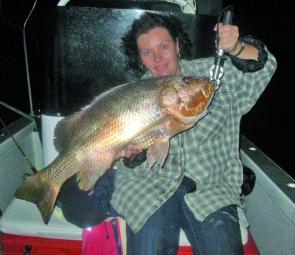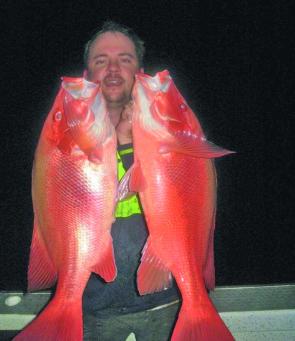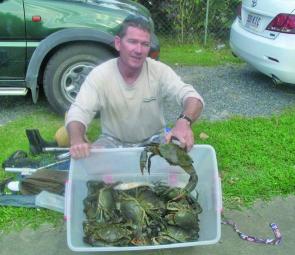Townsville fishing has been firing for the last couple of months and it can be expected to continue throughout June. Unfortunately we will have to put up with the trade winds preventing reef trips, but if you’re prepared to target smaller or even different species of fish on the inshore grounds then you may be pleasantly surprised.
School or doggie mackerel are probably the most sought after winter inshore species, due to their schooling nature and ease of access for small boat anglers. The Alligator Creek weed beds are one of the better-known spots and they are quite easy to find by looking for the other boats. On any calm morning in winter there will be a couple of boats at least trying their luck.
In the last couple of seasons anglers have had good catches around the shipping pylons and the structure strewn around Halifax Bay. This can vary from places like Burdekin Rock to wrecks and even rubble pads. The trick to fishing these areas of structure is bait – if the structure is holding bait, chances are there will be a school of doggies somewhere nearby.
The key to doggie fishing is berley, without it the school may swim right past your line. Feeding out a little berley at regular intervals will hopefully keep the fish in your area. If you’re not fishing in a yellow zone try flicking a metal slice around while floating pillies out at different depths.
Those anglers lucky enough to get offshore in the breaks of southerlies have found the Spanish mackerel only too willing on trolled baits of gar or mullet. Trolled lures have been working too but the best reports have come from baits. School sized fish from 8-15kg have been the main stay of most catches. But reports of fish weighing more than 25kg taken from the reef platforms on live fusiliers have also been filtering through.
To target mackerel in June there are other places to fish, rather than trying to get out to the reef. To the south try fishing the mack patches about 15 miles from Cape Cleveland or any of the shoals holding bait between there and the Haughton River mouth. For smaller boats stick around Cape Cleveland itself as there is plenty of good mackerel country there. Two Foot, Four Foot, Twenty Foot and Salamander reefs are all in a pretty close area and can be easily trolled around without punching your boat offshore. Or similarly, Magnetic Island also has some great deep water trolling runs around places like Orchard Rocks or the well-known wrecks off West Point.
If the weather becomes magically flat head out to places like Palm Island to the north or Shark Shoal straight out along the green zone. Palm has a long-standing reputation for big macks that is well deserved. Areas like Albino, Chillcott, Paluma and Hayman rocks all hold good schools of Spaniards at this time of year. Shark Shoal is more of a hit and miss area, its not called shark shoal for nothing. But if the sharks are letting you have a fair go, the mackerel fishing here can be fantastic.
It’s worth mentioning the improved quality of our grunter fishing in the last couple of years with fish over 70cm no longer rare catches. We have seen a return to the good old days with grunter being taken off the beaches on the night tides. It also seems whiting and flathead are back off the beaches in good numbers. Pumped yabbies or frozen, peeled prawns fished on a small long shank with a basic running rig will see some action.
The best tip I can give readers is to forget fishing at the strand. Since they topped up the strand with coarse river sand the schools of big whiting haven’t returned. This is probably because yabbies prefer the softer sand to dig into. Try fishing places like Cunngulla to the south or any of the northern beach suburbs instead. A favourite spot of mine is Pallarenda, past the old quarantine station. Look for the little holes covering the sand indicating where the yabby beds are and as the tide floods in fish over the top.
Mud crabs may seem to be dropping off with the cooler weather, but just like barra, they get a little lethargic but are still there to be caught. Try crabbing the bigger afternoon tides with fresh baits and use dillies over shallower areas to make the most of your time on the water.
Reads: 8238
Michelle Brownjohn a massive 9kg fingermark.

Matt Wittering holding two large mouth nannygai taken off the shoals wide of Magnetic Island during winter – this inshore area is famous for quality reds.

Eric O'Sullivan is more than happy with his haul of 15 big legal bucks taken in the cold weather. Like barra, crabs become a little lethargic in winter, but can still be caught.




